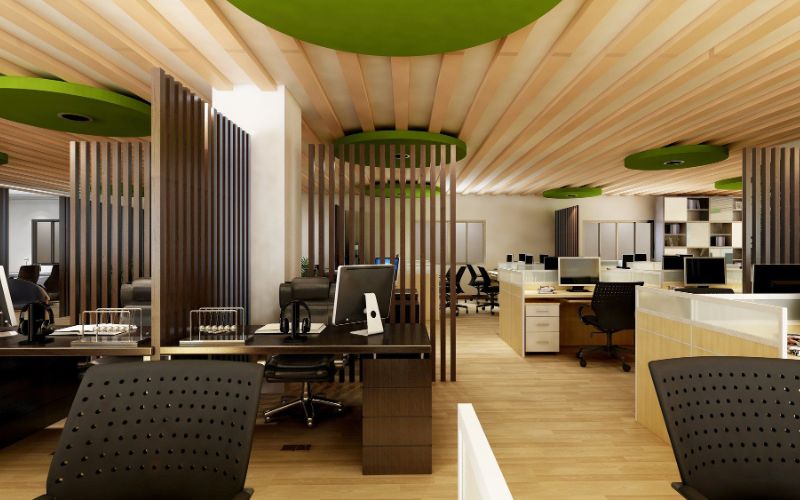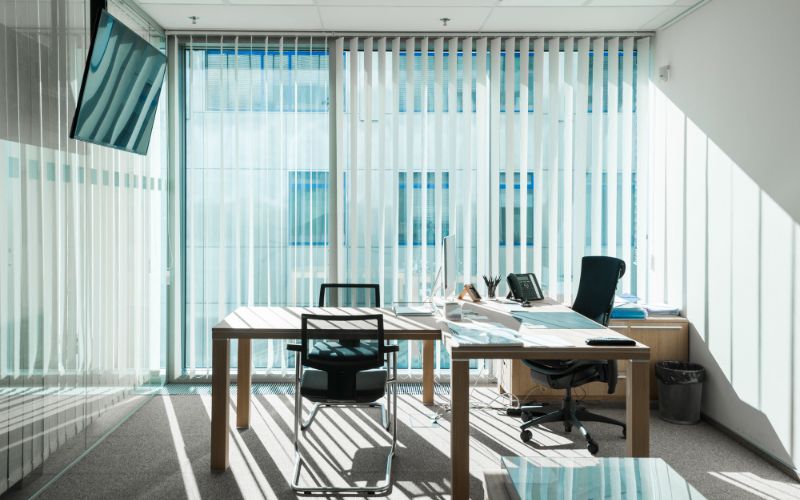First impressions matter, and your office interior is no exception. Research shows that the design of your workplace has a significant impact on your employees' job satisfaction, productivity, and even mood. A well-designed office interior not only creates a pleasing aesthetic but also contributes to the comfort and well-being of your employees, which in turn drives business success. From boosting morale and encouraging teamwork to attracting top talent and retaining employees, the benefits of a well-designed office interior are crucial to the success of any business.
In this blog, we'll explore the ways in which well-designed office interiors can positively impact your workplace and 10 crucial factors to consider when choosing an office interior designer.
Importance of Well-Designed Office Interiors
Before diving into the factors to consider, let's briefly highlight the significance of well-designed office interiors. A well-designed office can enhance employee morale, collaboration, and creativity. It also reflects your company's culture, values, and brand identity. By investing in a well-designed workspace, you create an environment that supports productivity, attracts and retains talented employees, and leaves a lasting impression on clients and visitors.
If you have an office in Kolkata and want to give it a brand-new look then search for "office interior designers in Kolkata" and top office interior designers will be listed to you.
Assess Your Needs: To begin the process of choosing an office interior designer, it is crucial to assess your specific needs. Consider factors such as space utilisation, branding, functionality, and employee preferences. Understanding your requirements will help you communicate your expectations to the designer and ensure that their design aligns with your goals.
How to assess your needs?
Here are the key points to consider when assessing your needs for choosing an office interior designer:
- Evaluate your space utilisation: Assess how your current office space is being used and identify areas that are underutilised or overcrowded.
- Define your brand identity: Consider your brand values and image, and how it can be reflected in the design of your office space.
- Identify your functional needs: Determine specific functional requirements such as meeting rooms, collaborative areas, workstations, storage, and reception areas.
- Prioritise employee preferences: Take into account the preferences of your employees, such as natural lighting, standing desks, or private workspaces.
- Analyse future growth potential: Consider your company's growth potential and how the office space needs might evolve in the future.
Check Experience and Expertise
When selecting an interior designer, experience and expertise in office design are paramount. Review their portfolio to assess their past projects and see if their style aligns with your vision. Look for designers with knowledge of your industry, as they will have insights into the unique requirements and challenges of office design.
Set a Realistic Budget
Establishing a realistic budget is essential for any office interior design project. Consider design fees, materials, furniture, and potential hidden costs. Be transparent with the designer about your budget from the outset, as they can propose solutions and make design choices that fit within your financial constraints.
Ways to set a realistic budget
Here are the key points to consider when setting a realistic budget for your office interior design project:
- Research typical costs: Do some preliminary research to get a sense of the typical costs involved in office interior design projects.
- Establish priorities: Determine your priorities for the project and focus on the most essential aspects of the design.
- Determine potential return on investment: Consider the potential benefits of investing in your office's interior design, such as increased employee productivity and retention.
- Be transparent with the designer: Establish open communication with your interior designer and be transparent about your budget limitations from the outset.
- Allow for some contingency funding: Set aside some contingency funding in case unexpected expenses arise during the project.
Align with Design Style and Aesthetics

TThe designer's preferred style should align with your company's brand and culture. Consider whether you want a modern, minimalist, or traditional design, and ensure that the designer has experience in creating spaces that reflect your desired aesthetic. Request samples or a mood board to visualise how their design style will transform your office.
Communicate and Collaborate Effectively
Effective communication and collaboration with the interior designer are crucial for a successful project. Set clear expectations, maintain regular updates, and establish open lines of communication. Provide feedback along the way to ensure that the design aligns with your vision.
Ways to have effective communication and collaboration
Here are the key points to consider for effective communication and collaboration in an office interior design project:
- Establish clear communication channels with stakeholders.
- Practise active listening to understand needs and expectations.
- Define roles and responsibilities for each team member.
- Schedule regular progress updates for all stakeholders.
- Foster a collaborative environment that encourages teamwork and respectful feedback.
- Utilise visual aids, such as sketches or 3D renderings, to communicate design concepts.
- Document decisions and agreements to ensure clarity and avoid misunderstandings.
- Conduct regular project reviews to address challenges and ensure progress.
Establish Realistic Timelines and Deadlines
Time management is essential in office interior design projects. Establish realistic timelines and deadlines to ensure that the project progresses smoothly. Regularly check the progress and address any potential delays proactively. Have contingency plans in place to mitigate unexpected challenges.
Check Client References and Testimonials
To gauge the designer's reputation and quality of work, check client references and testimonials. Reach out to previous clients to inquire about their experience working with the designer. Ask about their satisfaction with the final result, project management, and the designer's ability to meet deadlines.
Consider Sustainability and Environmental Factors

Incorporating sustainable design practices in your office interiors not only benefits the environment but also promotes employee well-being. Consider designers who prioritise the use of eco-friendly materials, energy-efficient systems, and sustainable design principles. These choices can enhance indoor air quality, reduce energy consumption, and create a healthier workspace.
Why Choose 123 Home Paints for Office Interior Designers?
By choosing 123 Home Paints as your office interior designer, you can expect professional expertise, attention to detail, quality materials, transparent communication, and a comprehensive range of services, all aimed at transforming your office space into an inspiring and functional environment. Undoubtedly, they have the best architect and interior designer in Kolkata.
Conclusion
When choosing an office interior designer, it is crucial to consider factors such as your specific needs, the designer's experience, budget, style alignment, effective communication, realistic timelines, client references, and sustainability. By prioritising these factors, you can ensure that you select a designer who will create a workspace that not only meets your requirements but also enhances productivity and employee satisfaction. A well-designed office interior can have a lasting impact on your business success and leave a positive impression on everyone who enters your workspace.